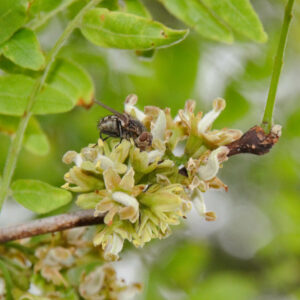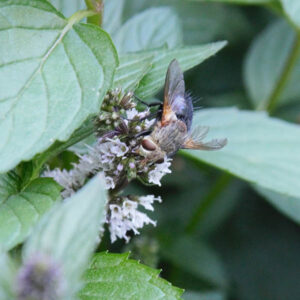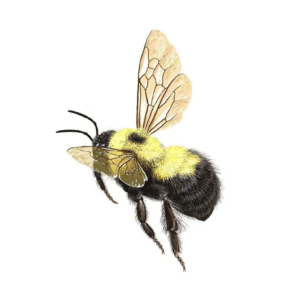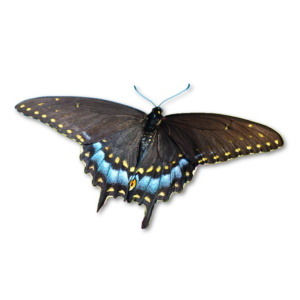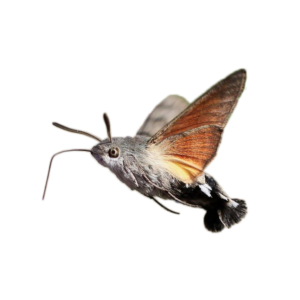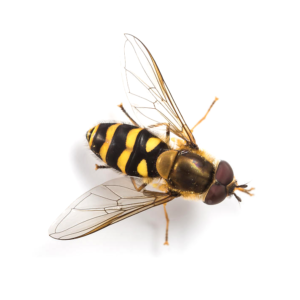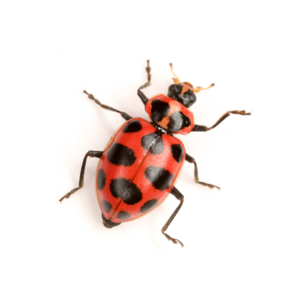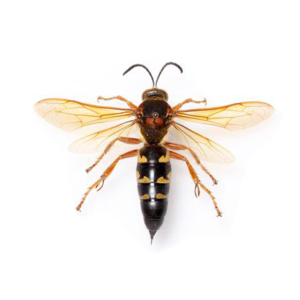Flies
Flies are frequently overlooked as pollinators. Despite this, they are the second most important pollinators, second only to bees. Flies are important pollinators of a variety of different crop plants such as pawpaws, onions, strawberries, cauliflower, fennel, mustard, and carrots.
Flies are also important for many early season flowering plants such as skunk cabbage (Symplocarpus foetidus), rue-anemone (Thalictrum thalictroides), and springbeauty (Claytonia virginica).
Plants that attract carrion flies tend to be pale or dark brown and purple (resemble rotting flesh) and are shallow and funnel like or have complex trap shapes. Nectar is often absent and pollen is limited. The smell also tends to be putrid. These flowers are mimicking carrion, dead/rotting flesh, so the flies are attracted to it thinking it is something they will be able to lay their eggs on. These flies will typically visit the flower, realize it’s not what they are looking for and quickly leave unless there is some sort of ‘trap’ present to keep them around longer.
Flower flies will tend to feed on pollen and nectar as adults and will be attracted to different types of flowers than carrion flies. Many of these flies mimic bees, some examples are syrphid/hoverflies (Syrphidae Family) and bee flies (Bombyliidae Family). They tend to visit flowers that are lighter in color and have a more pleasant scent. Unlike flowers that are typically visited by carrion flies, these flowers usually contain nectar.
Flies can be distinguished from bees several ways
- Look closely at the wings. Flies have one pair of wings (2 total), while bees and wasps have two pairs (4 total).
- You can also look at the antennae of the insects. Bees mimicking flies typically have small, short antennae, while bees and wasps have longer, elbowed antennae.
- Some flies, like syrphid flies, can ‘hover’ in the air while flying—it can seem like they’re floating—while most bees and wasps cannot. When flying, bees and wasps are always moving in one direction or another.
- Finally, bees and wasps can sting, flies cannot. However, this is probably not the way you want to determine if something is a bee, wasp, or fly.
Diversity
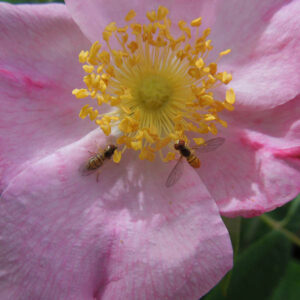
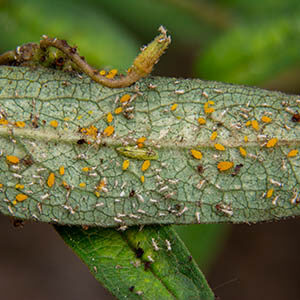

Syrphid flies (aka hover flies, flower flies, corn flies, helicopter flies, and sweatbees, among other names)—Syrphidae Family
These flies range in size from ¼ to ¾ of an inch long and resemble bees and wasps with yellow, orange, and black markings. Like bees and wasps, the adults are often seen around flowers.
In addition to being pollinators, syrphid flies also act as natural enemies of many pests like aphids and other small soft-bodied insects such as mealy bugs, scale, thrips, and insect eggs.
Females will lay their eggs on plants near or among aphid colonies. After about three days, the eggs will hatch. The maggots are legless with a tapered body and range in color from creamy-white to green or brown. A single larva can eat 20 to 30 aphids a day and up to 400 during its development. The larvae will feed for seven to ten days before they pupate. After around ten days as a pupa, the adults will emerge to continue the cycle again.
Although they are flies, Syrphid flies can sometimes be confused for sweatbees and are often referred to incorrectly.
Bee flies—Bombyliidae Family
Bee flies are stout-bodied, hairy flies. Most adults will hover while they feed on flowers with their long proboscis (tongue). As larvae, bee flies are predators or parasitoids on many types of insects including other flies, bees, wasps, butterflies, and grasshoppers. The females can often be seen hovering above the ground as they search for areas to lay their eggs.
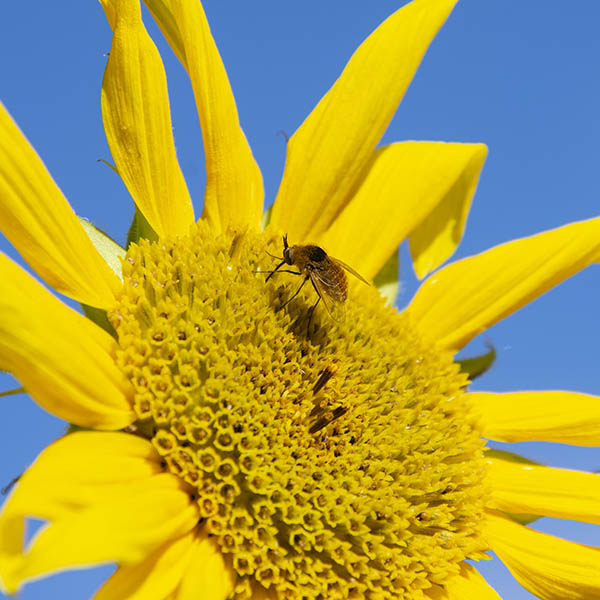
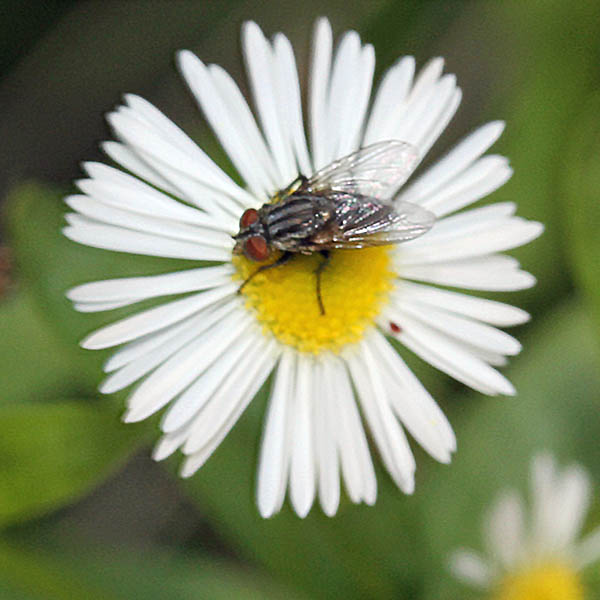
House flies—Muscidae Family
While commonly seen as pests, house flies may also act as pollinators. Adults can commonly be seen on decaying organic matter, carrion, and dung where they will feed and lay eggs. Adults may also feed on flower nectar, helping to pollinate plants.
Tachinid flies—Tachinidae Family
Tachinid flies often resemble house flies. They are commonly gray, black, or striped and will often have many distinct bristle like hairs on their abdomens. Adults feed on liquids like nectar and honeydew. The larva are parasites of other insects, particularly caterpillars and beetle larva, and play an important role in controlling pest populations.
